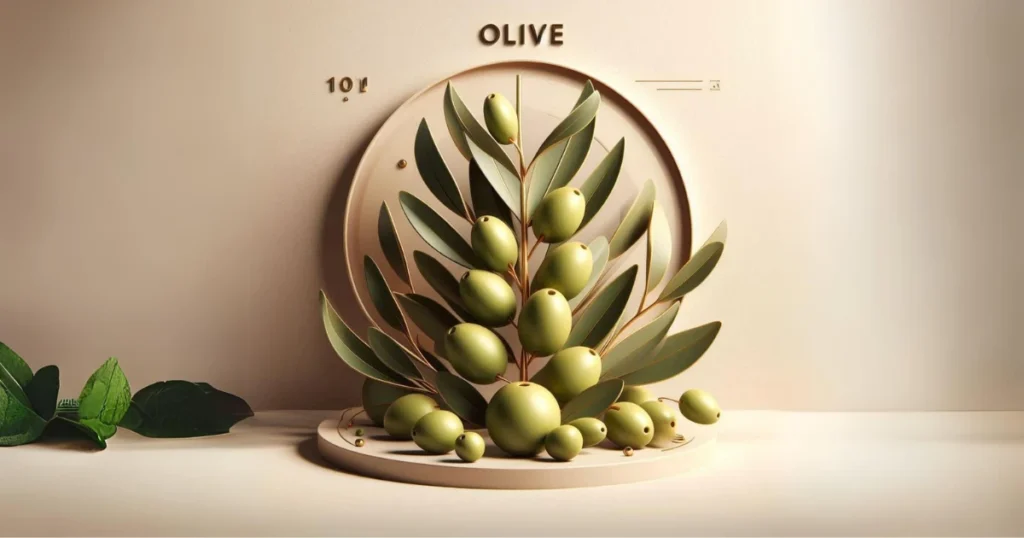
Olives have a lot of vitamin E and other strong antioxidants. Studies have demonstrated their beneficial effects on the heart and their potential to prevent cancer and osteoporosis.
To extract the healthy fats from olives, press them. Olive oil is an important part of a very healthy Mediterranean diet. People also like to eat olives in sandwiches, soups, and spreads.
Some olives are green when they are young and turn black when they are ready. Some stay green even when they are fully ripe.
Olive oil comes from 90% of the olives cultivated in the Mediterranean. This will teach you everything you need to know about olives.
Nutrition facts
Olives have a calorie content ranging from 115 to 145 per 3.5 ounces (100 grams), which is approximately 59 calories for a serving of 10 olives.
The nutritional information for 3.5 ounces (100 grams) of ripe, canned olives is as follows:
- Calories: 116
- Protein: 0.8 grams
- Carbs: 6 grams
- Sugar: 0 grams
- Fiber: 1.6 grams
- Fat: 10.9 grams
- Saturated: 2.3 grams
- Monounsaturated: 7.7 grams
- Polyunsaturated: 0.6 grams
Carbs and fiber
Olives contain 4–6% carbohydrates, classifying them as a low-carb fruit.
The majority of these carbohydrates are fiber. Fiber constitutes 52–86% of the total carbohydrate content.
The net amount of digestible carbohydrates is minimal. Nevertheless, olives contain a rather low amount of fiber, as 10 olives only contain approximately 1.5 grams.
Fat
Olives have a fat content of 11–15%, with 74% of it being oleic acid, a monounsaturated fatty acid. Olive oil‘s primary component.
Oleic acid is associated with various health advantages, such as reduced inflammation and a lower likelihood of heart disease. It may also aid in combating cancer.
Vitamins and minerals
Several vitamins and minerals, some included in the processing, are abundant in olives. The fruit contains beneficial chemicals, including:
Vitamin E. High-fat plant diets typically contain a significant amount of this potent antioxidant.
- Iron: Black olives are a good source of iron, which is essential for red blood cells to carry oxygen.
- Copper: This crucial mineral is frequently deficient in the standard Western diet. Copper deficiency can elevate the likelihood of developing heart disease.
- Calcium: Calcium, the most prevalent mineral in the body, is crucial for bone, muscle, and nerve function. Certain olive processing techniques include adding calcium to the fruit.
- Sodium: Due to their preservation in brine or saltwater, olives typically have high sodium levels.
Other plant compounds
Olives have a high concentration of other plant chemicals, particularly antioxidants, such as the following:
Oleuropein: Fresh, unripe olives contain the highest concentration of this particular antioxidant. It is associated with a broad spectrum of health benefits
Hydroxytyrosol: The breakdown of oleuropein during olive ripening produces hydroxytyrosol. It is also a potent antioxidant in its own right.
Tyrosol: Most commonly found in olive oil, this antioxidant may have anti-cancer properties.
Oleanolic acid: This antioxidant helps prevent liver damage and reduces inflammation.
Quercetin: By lowering blood pressure and improving heart health, this vitamin may be beneficial.
Health benefits of olives
Olives are a cornerstone of the Mediterranean diet. Numerous health benefits, particularly in the prevention of cancer and cardiac disease, are associated with them.
Antioxidant properties
Research has shown that dietary antioxidants can lower the risk of chronic diseases like cancer and heart disease.
Olives are an excellent source of antioxidants, which have numerous health benefits, including anti-inflammatory and microbe growth inhibitory effects.
Consuming the pulpy residue from olives substantially increased blood levels of glutathione, one of the most potent antioxidants in the body, according to a 2009 study.
Improved heart health
Both hypertension and elevated blood cholesterol are risk factors for cardiovascular disease.
Researchers have linked the primary fatty acid in olives, oleic acid, to cardiovascular health benefits. It may prevent the oxidation of LDL (bad) cholesterol and regulate cholesterol levels, but more evidence is required, according to some experts.
A number of studies have also found olives and olive oil to potentially lower blood pressure.
Improved bone health
Osteoporosis is characterized by a reduction in both bone mass and bone quality. It may elevate the susceptibility to fractures.
Mediterranean countries have a lower incidence of osteoporosis compared to the rest of Europe, which has sparked speculation regarding the potential protective effects of olives against this condition.
Animal and test-tube studies have demonstrated that certain plant compounds present in olives and olive oil possess the ability to inhibit bone loss.
Additionally, observational studies suggest that eating a Mediterranean diet may lower the risk of bone fractures.
Cancer prevention
People frequently consume olives and olive oil in the Mediterranean region, which is known for having comparatively lower incidences of cancer and other chronic ailments.
Thus, olives have the potential to reduce the risk of developing cancer.
Their elevated levels of oleic acid and antioxidants may contribute. According to test-tube and observational research, these compounds impede the proliferation of cancer cells in the stomach, colon, and breast.
Nevertheless, controlled, long-term human investigations are required to validate these findings. It is currently unknown whether consuming olives or olive oil reduces the risk of developing cancer.
Processing of olives
These types of whole olives are the most common:
- Pickled green olives from Spain
- Raw black olives from Greece.
- After oxidising them to make them ripe, we pickled California olives.
Olives are bitter, so people don’t eat them right away. Instead, they are cooked and allowed to ferment. This process reduces the amount of bitter chemicals, such as oleuropein, that are present in olives that aren’t fully ready yet.
The fermentation process may lower cholesterol levels and add good bacteria to the end product.
On the other hand, some varieties are fully ripe and don’t require processing.
There are different ways to process olives, and it can take anywhere from a few days to a few months. Local customs often influence the fruit’s processing, altering its taste, color, and structure.
It is also important to have lactic acid during fermentation. It naturally keeps the olives fresh and stops bacteria from making them go bad.
Scientists are looking into whether fermented olives have probiotic effects right now. This might be good for your gut health.
Potential downsides
Liquid-packed olives can retain a significant amount of salt. Most people can handle olives.
Allergy: People who are allergic to olive tree pollen are often not allergic to olives. Some people may have allergic reactions in their mouths or throats after eating olives.
Acrylamide: While some studies link acrylamide to a higher risk of cancer, other scientists disagree. Some people choose to take in as little acrylamide as possible.
Some types of olives, especially ripe black olives, may contain a high amount of acrylamide due to their processing. Olive growers are exploring methods to reduce the production of acrylamide during the olive processing process.
The bottom line
Olives are a tasty and salty addition to meals and snacks.
They have few carbs and a lot of good fats. Several health benefits, including improved heart health, are also associated with them.
It’s easy to add this stone fruit to your daily routine, and it goes well with a healthy, whole-foods-based diet.


